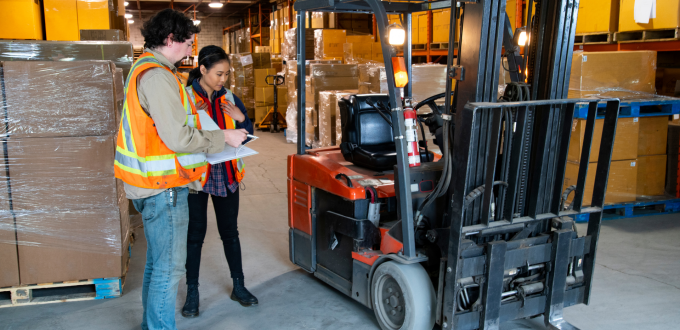Safety management is a delicate balance as workplaces become more efficient, and productivity increases. Yet, as this happens, risk increases. As risk increases, so does the potential for accidents to happen. With these risks becoming more common, learning how to communicate safety practices (such as having a professional cleaning company at their disposal) to prevent accidents and promote hygiene is a must.
Communication is key when you are trying to implement workplace safety practices. This includes everything from safety inspections and testing to repairs and renovations. You may have to hire an expert with knowledge of workplace remodeling (check out multi-m-contracting.com or similar sites for a commercial contractor) to ensure everything in the office is upgraded and safe for employees. And to keep your workers safe and your insurance premiums to a minimum, you need to communicate these things effectively. Here are some tips on ways of communicating safety practices in a workplace.
Sending newsletter or email
Emails and newsletters can be a great way to communicate key safety information to employees, including information on any policy changes or updates, new safety procedures, or even safety reminders about working safely on the job. Depending on your company’s policies, you can communicate with employees directly through email or a newsletter.
Pictures or videos
Management can be tricky, especially when you’re training new employees. You want them to learn, but you also want to ensure they’re retaining the information. Fortunately, there are many tools you can use to help it along: videos, pictures, and other visual aids. Be sure to use both in your training materials.
Have a proper training
Every bit of safety training must be a requirement mandatory for new hires, and such training sessions must be on a regular schedule so existing staff can refresh their knowledge and skills. Safety training should include information on hazards and protective measures in your workplace, what first aid procedures to apply in an emergency, safe use of equipment, and the proper use of protective equipment.
It’s never too late to begin educating and training your employees on how to (and how not to) use hazardous materials. Some of the most common hazards are alcohol, diesel oil, antifreeze, hydrogen peroxide, cleaning solvents, and paint. You can set up an on-site training room where you can conduct training on these topics, and there are also free online resources that can be used to supplement your training program.
Do a regular meeting
Workplace safety shouldn’t happen only once a year at a company safety meeting. It should be a regular, ongoing topic of discussion. Create a safety culture where employees don’t think twice about asking each other about safety procedures, walking an extra step to ensure they’re following strict safety guidelines, and speaking up when they see something unsafe. Holding regular meetings, like safety or leadership meetings, will do just that. This will be especially helpful if you have a huge office, where it is completely human to miss out on some of the things. With timely meetings, where anyone can point out the drawbacks, you can take action to implement proper measures. For example, if employees are bothered by the cleanliness of the workplace, you can hire office cleaning industry professionals to sort that out. Similarly, if the manforce working in the manufacturing unit has safety concerns, you can equip them with proper gear like helmets, gloves, shoes, or anything similar. The goal should be to keep safety a priority, no matter what the means.
Have a routine safety check
Whenever you go on-site, you want to stick to a routine. If you arrive in the morning and walk over to the site, the weather is the only difference from day to night. When the weather is bad, it can influence how you feel and affect your safety. But even when the weather is good, by keeping to a set routine, you know where you are going to be, when, and for how long. If something goes wrong, you know that someone noticed it before it got worse.
When conducting routine safety checks, you are very much aware of your surroundings, paying particular attention to the things that shouldn’t happen. There are scores of safety checks that you can conduct, but it’s important to keep your eyes open for the important ones.
Standardizing safety procedures is a must if you work in the construction industry. The most common hazards associated with construction jobs include manual lifting and carrying, electrical circuits falling from heights, and vehicle operation. But, hazards can be minimized or eliminated by following safe practices.
Every company should have a safety plan, but are you making it a priority? In today’s workplace, safety is always a concern, but accidents can occur in even the safest work environments. This impacts your employees, your supervisors, and most of all: your company. It can create undue stress, expensive downtime, and a loss of productivity. The first step to preventing accidents is to be aware of the dangers. Communication plays an important part in workplace safety. Effective communication ensures the workplace remains a safe and productive environment. The importance of communicating workplace safety practices cannot be understated. A failure to communicate workplace safety practices may put a company at risk.
The Occupational Safety and Health Administration (OSHA) sets forth different regulations for workplace safety, with the General Duty Clause (GDC) being the most popular regulation. The GDC requires that employers have a general duty to maintain a safe and healthful workplace. This general duty requires employers to take reasonable precautions to ensure that the workplace is safe for their employees.


No Comments Yet